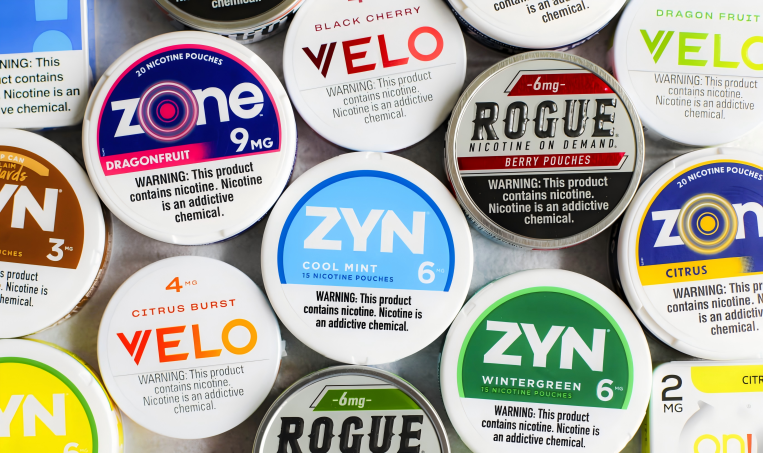Adapting to Regulatory Changes: What Health Canada’s Nicotine Pouch Rules Mean for Business

When a consumer walks into a convenience store to grab a few things and looks over at the shelves where nicotine pouches used to be, they find them completely empty. In place of those familiar products, there’s a small sign directing you to the nearest pharmacy. This change is thanks to Health Canada’s new regulations, which have moved nicotine pouches out of convenience stores and into pharmacies only. But what does this mean for Canadian businesses? And how are companies dealing with these sudden shifts? These new regulations have disrupted the nicotine industry, sparking resistance from major players in the convenience store sector. Distributors and retailers are now scrambling to adapt their business models to avoid being pushed out entirely. Health Canada’s New Nicotine Pouch Regulations Health Canada’s latest regulations are aimed at reducing youth nicotine use and stopping non-smokers from picking up nicotine pouches just for fun. Now, you can only find nicotine pouches at pharmacies—they’re gone from convenience stores and gas stations. In addition, the range of flavors has been further limited, with options like ‘berry frost’ and ‘tropical breeze’ removed, leaving only mint and menthol. The only approved nicotine pouch is Zonnic, made by Imperial Tobacco, which Health Canada sees as a tool for quitting smoking rather than an enticing product for new users—especially teens who are looking for something novel to try. Impact on Retailers: From Convenience Stores to Pharmacies For convenience store chains like Mac’s and Couche-Tard, these changes are a major blow. They’ve already filed lawsuits against Health Canada, arguing that the new rules are unconstitutional and will drive consumers straight into the black market. They believe that taking nicotine pouches off the shelves won’t actually prevent youth from accessing them but will instead push them towards unregulated and potentially dangerous sources. Parkland Corp., the company behind On the Run convenience stores, is on the same page. They point out that their stores have a history of responsibly selling age-restricted items, like tobacco and alcohol. They argue that pharmacies, while well-versed in health products, are less convenient for smokers trying to quit, who might now find it harder to get these alternatives. It’s not just the big players feeling the pinch. Small retailers, especially those in rural areas, are struggling. Many of these stores rely on nicotine products as a core part of their income. Without the resources to fight the rules in court or quickly shift to other revenue sources, these small businesses are at risk of seeing a significant drop in sales. Many convenience stores have historically depended on tobacco and nicotine products to provide consistent income. With these new restrictions, small retailers are left scrambling to fill the gap. But there’s no guarantee that the new options they’re turning to will be as popular—or as profitable. Rising Black Market Concerns Figure 1 Image borrowed from CBC News One of the biggest worries for retailers like Couche-Tard and Parkland is that these regulations will end up growing the black market. When legitimate products disappear, demand doesn’t just go away—it finds another outlet. Retailers worry that young people will start buying nicotine pouches online or through unregulated channels. These unregulated products can be extremely risky, with unknown ingredients, inconsistent nicotine levels, and zero quality control. Counterfeit nicotine pouches could also contain toxic substances that make them even more dangerous than regulated ones. The black market for nicotine products isn’t just a possibility; it’s something we’ve seen happen before. In Australia, similar bans led to a spike in illicit nicotine sales, with products being sold through online stores or underground networks. Canadian retailers are concerned that the same thing will happen here, undermining public health goals and making the market less safe overall. Critics of Health Canada’s approach argue that instead of restricting access, the government could focus on education and harm reduction—methods that have worked well in other places like Sweden. In Sweden, harm reduction initiatives have made safer alternatives widely accessible while providing clear information about the risks. This strategy has significantly reduced smoking rates without driving users towards dangerous, unregulated options. To stop the black market from growing, there’s also a need for targeted enforcement to crack down on illegal sales. At the same time, partial policy adjustments could help. For instance, allowing limited sales in convenience stores under strict regulations might help create a more balanced market, offering adults convenient access while keeping protections for young people in place. Strategies for Adapting to Regulatory Changes With these regulations now in effect, businesses need to think creatively to stay afloat. Here are several strategies manufacturers and distributors can consider: 1. Strengthen Partnerships with Pharmacy Chains Pharmacies like Shoppers Drug Mart could become key partners for nicotine pouch brands, as they’re now one of the few places where these products can be legally sold. 2. Explore E-Commerce Options E-commerce, where Canadian regulations permit, could be a viable way to reach customers who can’t easily access pharmacies. 3. Education-Focused Marketing Collaborate with healthcare providers to present nicotine pouches as legitimate tools for quitting smoking. 4. Launch Consumer Outreach Campaigns Partner with healthcare professionals and use digital platforms to educate the public on the benefits of using regulated nicotine products to quit smoking. 5. Lobby for Policy Adjustments Consider working through industry associations to open dialogue with Health Canada. These strategies represent different paths for adapting to the changing landscape, each with its own set of challenges and opportunities. Public Health vs. Business Needs: A Delicate Balance Health Canada’s aim is clear: protect young people from nicotine addiction and prevent recreational use of nicotine pouches. To enforce these rules, Health Canada plans to carry out regular pharmacy inspections, keep an eye on online sales, and collaborate with law enforcement to tackle illegal channels. But for businesses, this new reality is a bitter pill to swallow. The tension between public health goals and business interests is real. Convenience stores and gas stations have relied on nicotine pouches as a part of their product mix, and losing this line disrupts both their revenue and
